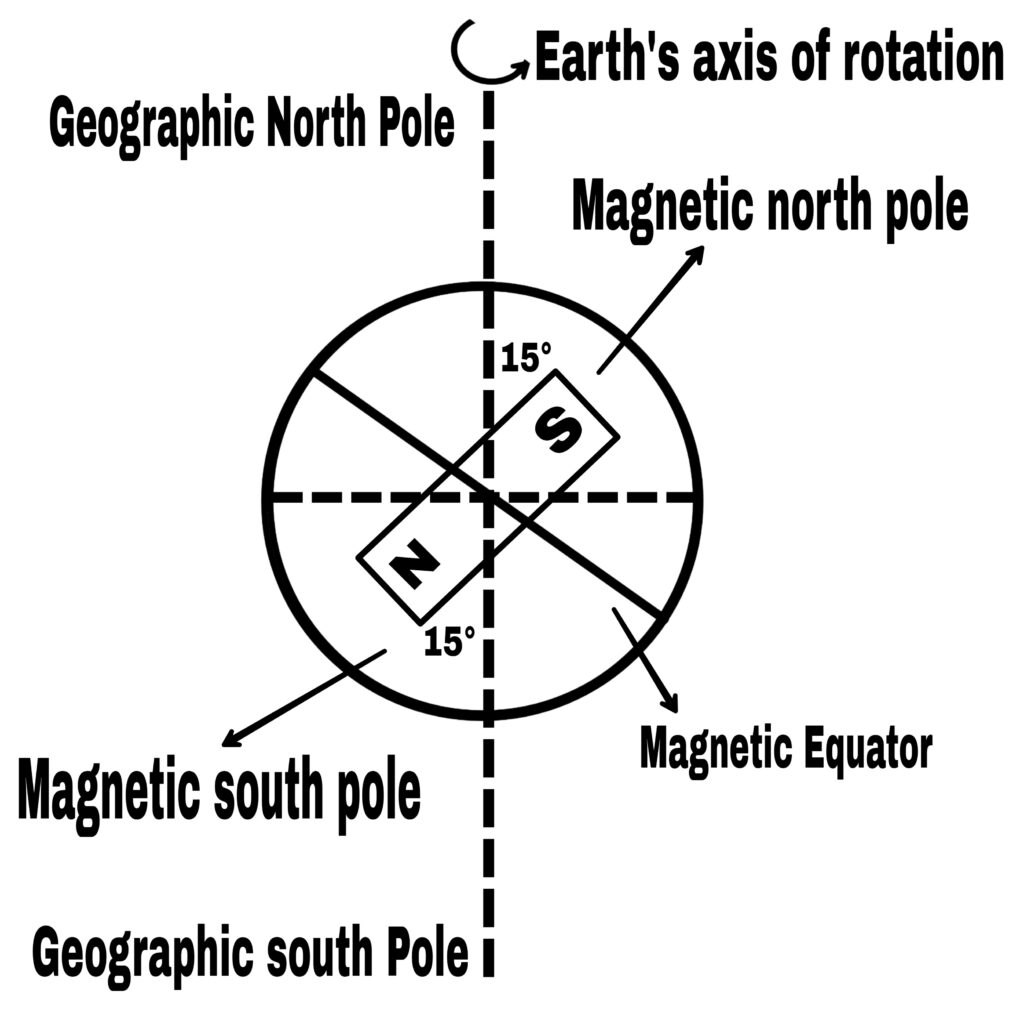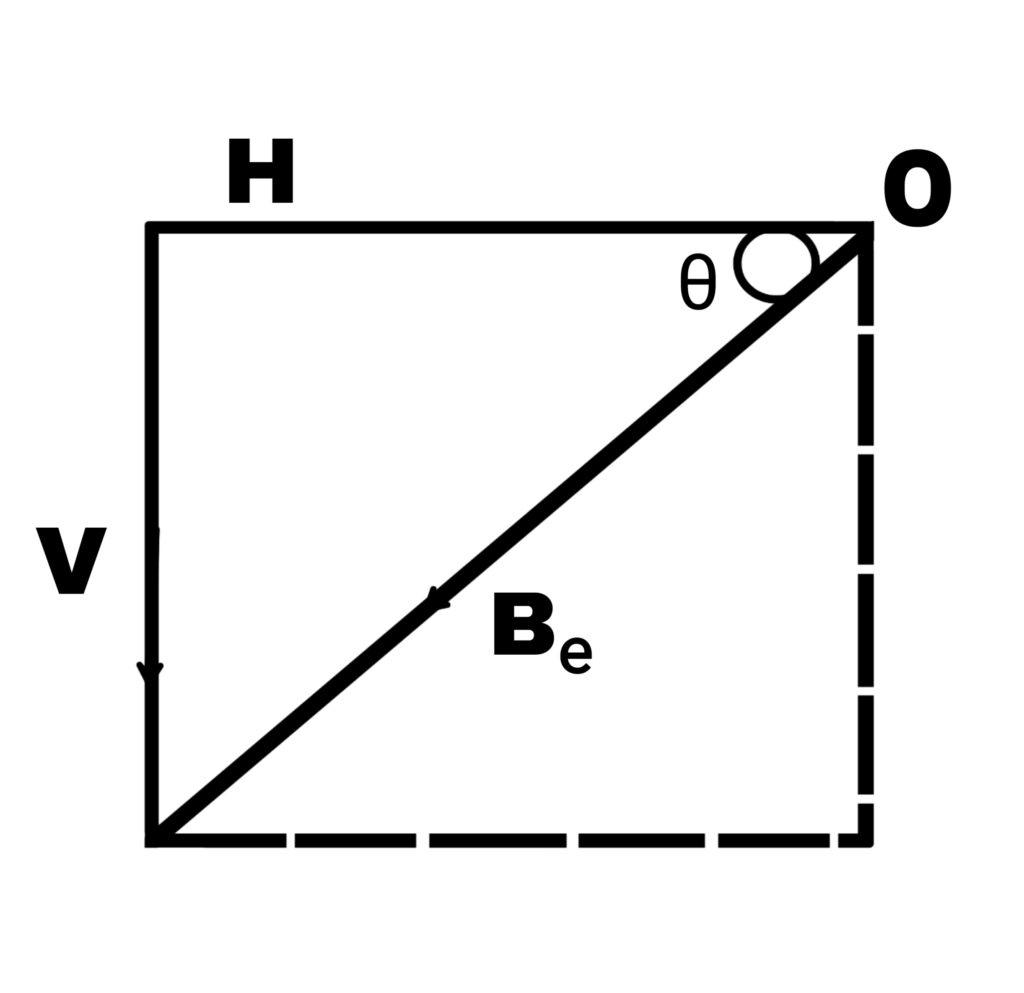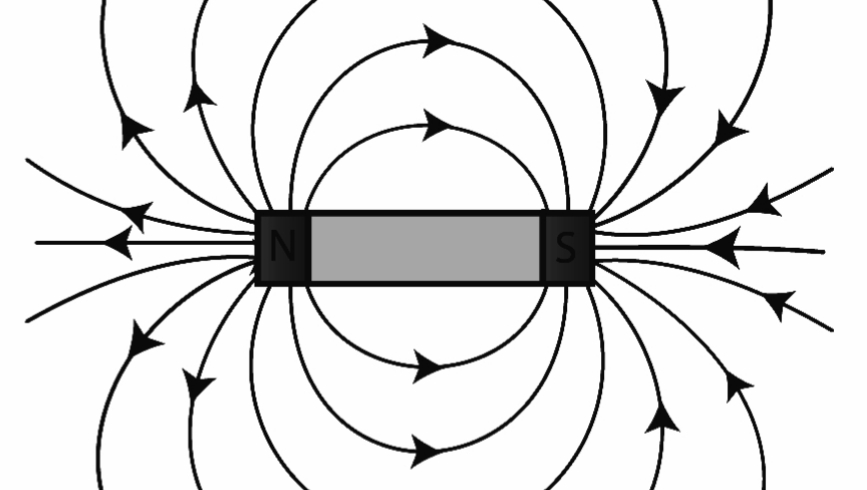Magnetic lines of force
Magnetic lines of force are imaginary lines that show the direction of the magnetic field.
Properties of magnetic lines of force
Magnetic lines of force always emerge from the north pole of a magnet, curve to the south pole, and then return to the north pole through the magnet. Thus, magnetic lines of force are closed curves.
Two lines of force never intersect because if they did, two tangents could be drawn at the intersection, which would result in two directions of the field at that point, which is impossible.
The magnetic field is stronger near the pole of a magnet because the lines of force are closer together. As one moves away from the pole, the strength of the magnetic field decreases as the lines of force move further apart.
At any location, the lines of force in the Earth’s magnetic field are parallel to each other and equidistant.
Earth’s Magnetic Field

Our Earth behaves like a powerful magnet. Its south pole is located towards the Earth’s North Pole, and its north pole is located towards the Earth’s South Pole.
Geographical Meridian
The plane passing through the line joining the Earth’s geographic North and South Poles at a location is called the geographic meridian.
Magnetic Meridian
The vertical plane passing through the axis of a freely suspended magnetic needle at a location is called the magnetic meridian.
The vertical plane passing through the magnetic North and Magnetic South of a magnet is called the magnetic meridian.
Angle of Declination
The acute angle between the magnetic meridian and the geographic meridian at a location is called the angle of declination.
Angle of Dip
The angle that a freely applied magnet makes with the horizontal direction is called the angle of dip.
Horizontal component of the Earth’s magnetic field
The Earth’s magnetic field Bₑ is divided into horizontal and vertical components, denoted by H and V, respectively.
The Earth’s magnetic field Bₑ makes an angle θ with the horizontal.

Therefore,
The horizontal component of the Earth’s magnetic field
H = Bₑ.Cosθ ——(1)
And the vertical component
V = Bₑ.Sinθ —–(2)
Squaring equations (1) and (2) and adding them gives:
H² + V² = Bₑ²
(Sinθ + Cosθ)H² + V² = Bₑ²
Bₑ = √(H² + V²)
Equation (2)/(1)
tanθ = V/H
θ = tan⁻¹(V/H)
Classification of substances based on their magnetic behavior
Faraday was the first to demonstrate that all substances possess the property of magnetism. Substances have been classified into three categories based on their magnetic behavior.
1. Diamagnetic Substances
2. Paramagnetic Substances
3. Ferromagnetic Substances
1. Diamagnetic Substances
Substances that, when placed in a magnetic field, become slightly magnetized in the direction opposite to the field.
Examples – Bi, Zn, Cu, Ag, Au
Diamagnetic substances are repelled when brought near the tip of a powerful magnet.
2. Paramagnetic Substances
Substances that, when placed in a magnetic field, become slightly magnetized in the direction of the field and when brought near a powerful magnet, become attracted to the tip are called paramagnetic substances, and this property is called paramagnetism.
Examples – Al, Na, Pt, Mn
3. Ferromagnetic Substances
Substances that, when placed in a magnetic field, become strongly magnetized in the direction opposite to the field are called ferromagnetic substances.Such substances are strongly attracted when brought near a powerful magnet.
Examples – Fe, Co, Ni
Properties of Diamagnetic Materials, Paramagnetic Materials, and Ferromagnetic Materials
1. Diamagnetic Materials
Diamagnetic materials have a low and negative magnetic field.
The relative magnetization value μᵣ is less than one.
When a rod of diamagnetic material is freely suspended between magnetic poles, the axis of the rod rotates and becomes perpendicular to the magnetic field.
These materials are attracted to the less intense part of the non-uniform magnetic field.
The magnetic field of diamagnetic materials depends on temperature.
2. Paramagnetic Materials
The magnetic field of diamagnetic materials is a low and positive magnetic field.
The relative magnetization value μᵣ is greater than one.
When a rod of diamagnetic material is freely suspended between magnetic poles, the axis of the rod rotates and becomes parallel to the magnetic field.
These substances are attracted to the more intense part of a non-uniform magnetic field.
The magnetic susceptibility of a paramagnetic substance is inversely proportional to temperature.
That is,
Xₘ ∝ 1/T
Xₘ = C/T
Where,
T = temperature (Kelvin)
C = constant, called the Curie constant.
This is called Curie’s law
3. Ferromagnetic Substances
The magnetic susceptibility of ferromagnetic substances is greater and positive than Xₘ.
The relative magnetization μᵣ value is much greater than one.
These substances tend to be attracted to the more intense part of a non-uniform magnetic field.
When placed in a magnetic field, these substances become strongly magnetized in the direction of the field.
Curie Temperature
The temperature below which a substance is ferromagnetic and above which it is paramagnetic is called the Curie temperature of the substance.

